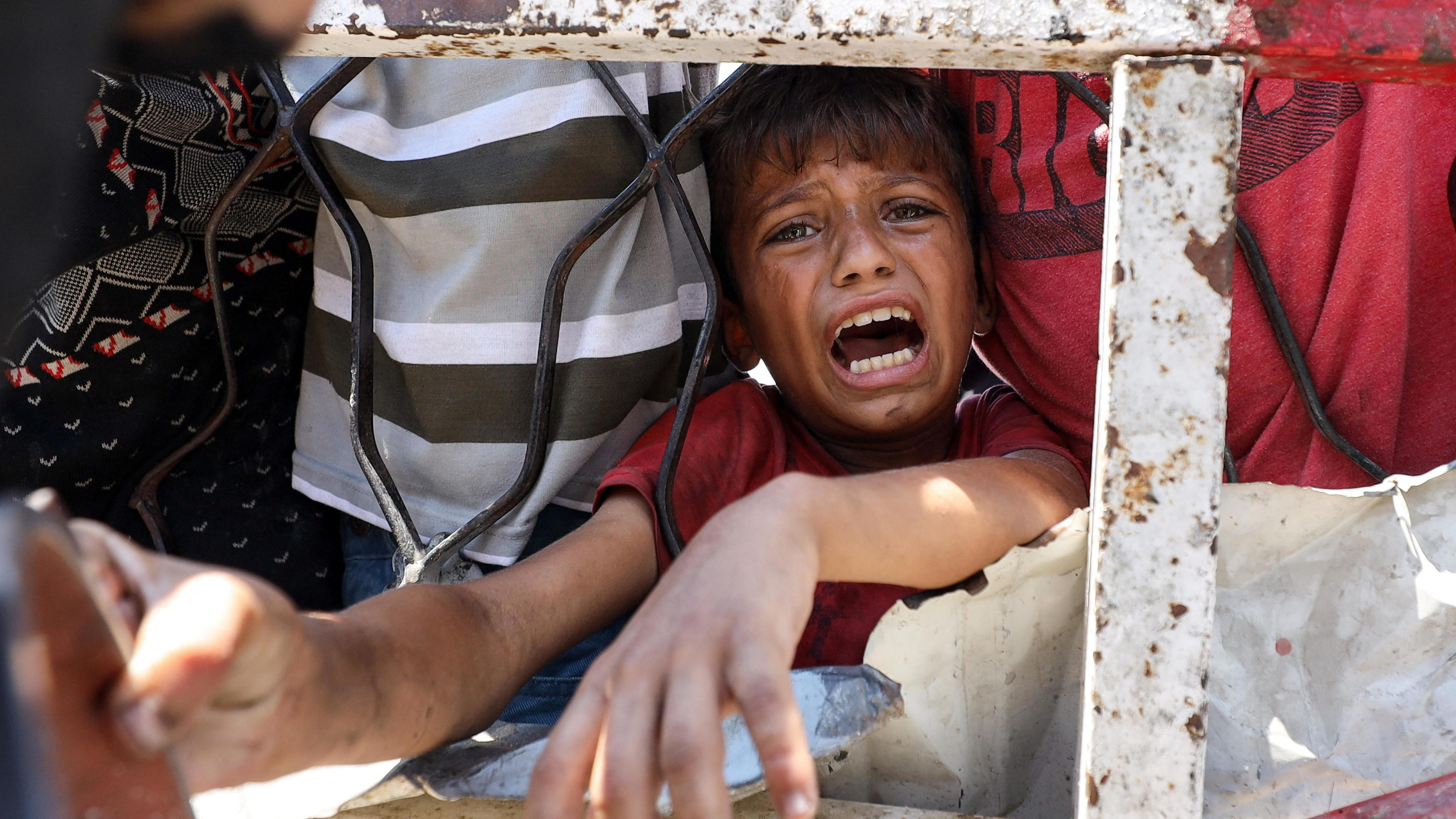Aid leaders are condemning the recent decision to perform air drops in Gaza as a “grotesque distraction” from the serious and escalating hunger crisis facing the area.
On Saturday night, Israel’s military announced its intent to commence aerial aid drops to combat the plunging conditions in Gaza. They’ve also opened humanitarian corridors for the UN aid deliveries.
Expectations are mounting as the United Arab Emirates (UAE) and Jordan gear up for similar air drops in the days ahead. Meanwhile, UK Prime Minister Keir Starmer stated that Britain is committed to doing “everything possible” to help by supplying aid from the air.
However, Ciarán Donnelly from the International Rescue Committee emphasized that air drops “can never deliver the volume or quality” of assistance that is truly needed during this crisis.
More than 100 humanitarian organizations and rights groups are sounding the alarm over mass starvation risks in the Strip. According to reports, about a third of Gazans have been going days without meals, further emphasized by the UN food program.
Recently, the Hamas-led health ministry in Gaza reported five more deaths on Saturday due to malnutrition, bringing the grim total to 127, with 85 of those being children.
The World Food Programme has highlighted that one in three residents of Gaza are enduring days without food, pointing to 90,000 women and children who direly need urgent help in what the organization describes as a “man-made mass starvation” event.
The push for air drops comes on the heels of a failure for aid to get through traditional land routes into Gaza.
Philippe Lazzarini, head of the UN’s Palestinian refugee agency Unrwa, labeled air drops as “expensive” and cautioned that they could inadvertently harm civilians if not executed properly.
Lazzarini noted his agency has an equivalent of 6,000 trucks awaiting clearance in Jordan and Egypt, ready to head to Gaza.
“Driving aid through is safer, quicker, and far more dignified for those suffering in Gaza,” he remarked.
This assertion came right before Israel announced the creation of “designated humanitarian corridors” for UN convoys carrying food and medical supplies, without specifying their locations or operational details.
Despite these assertions, the Israeli government claims there are no hindrances on aid entry into Gaza, suggesting that the UN complicates things by coordinating with Hamas.
In contrast, the UN has denied these claims, stating that it is Israel that is blocking aid accessibility with various bureaucratic hurdles.
The Hamas group rebutted any allegations of siphoning off aid from distribution points, supported by a recent USAID report which found no proof of deliberate theft.
This isn’t the first endeavor by Western and Arab countries to deliver aid from the air during crises in Gaza; last year, Britain’s Royal Air Force accomplished 10 air drops, distributing 110 tonnes of supplies.
Nonetheless, aid organizations have stated these amounts fall drastically short compared to the increasing threats of mass starvation.
Research from the BBC underscores that approximately 160 aircraft would be essential to deliver just one meal for each of Gaza’s 2 million residents, complicating the situation further.
Historically, US Central Command (Centcom) shared data indicating their C-130 cargo planes could deliver about 12,650 meals on each trip, illustrating just how improbable it is to get enough aid through air drops.
It’s believed Jordan has around 10 C-130s ready while the UAE has 8 additional planes on standby.

Numerous aid organizations have raised serious concerns about the perils involved in dropping large food parcels in densely populated areas like Gaza.
Shaina Low from the Norwegian Refugee Council recounted instances of chaos as recipients often “drown” while trying to retrieve aid swept away into the Mediterranean, and warned that food boxes have caused injuries as they hit the ground.
Even successful drops can incite chaos, with people hurt in the scramble for aid.
Residents in Gaza are remarkably anxious about potential effects, with discussions revealing a pervasive fear that these drops can create tragic outcomes. One man recounted how aid hits tents, posing potential risks of injury and fatality.
Amid this crisis, countless Palestinians struggle not just with lack of food, but dehydration conditions as well. A mother expressed her dire situation to the BBC, lamenting lack of access to basic necessities: “We are craving even a drop of water.”
The ongoing conflict in Gaza ignited when Israel retaliated against a Hamas attack on southern Israel on October 7, 2023, resulting in approximately 1,200 fatalities and many more being taken captive.
According to the latest reports, over 59,000 individuals have succumbed in Gaza amid the ongoing military operations.
A total blockade on aid deliveries was put in place by Israel in early March and saw military action resume against Hamas just two weeks later, leading to a collapse of a two-month temporary ceasefire. This was part of the strategy aimed at solvent release of remaining Israeli captives.
Even as some barricades were loosened after widespread devastation threats were issued, supplies of essential resources like food, medication, and fuel continue to dwindle.
This humanitarian nightmare in Gaza has resulted in the population facing multiple displacements and cataclysmic damage, with over 90% of living quarters being compromised or completely destroyed.





















